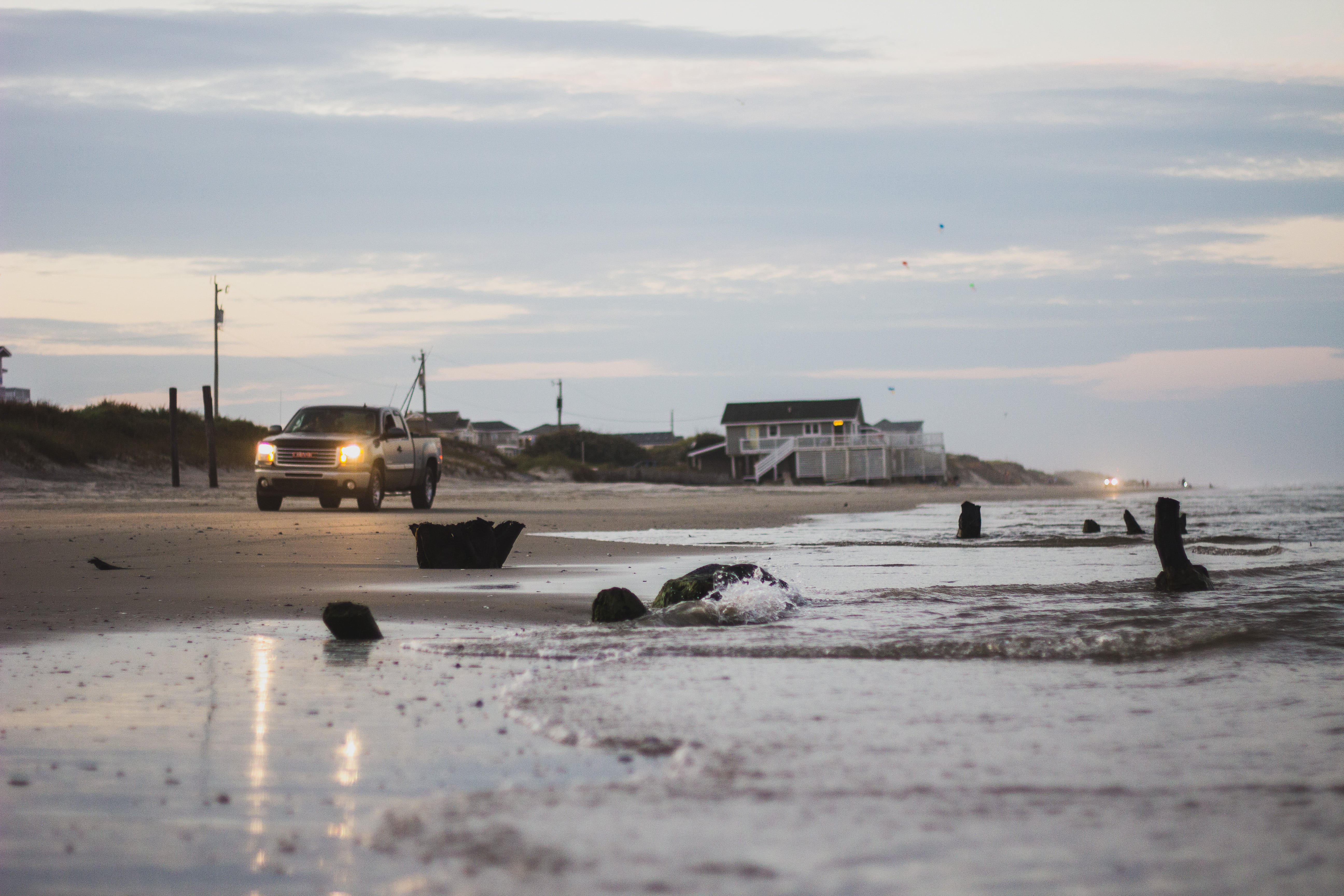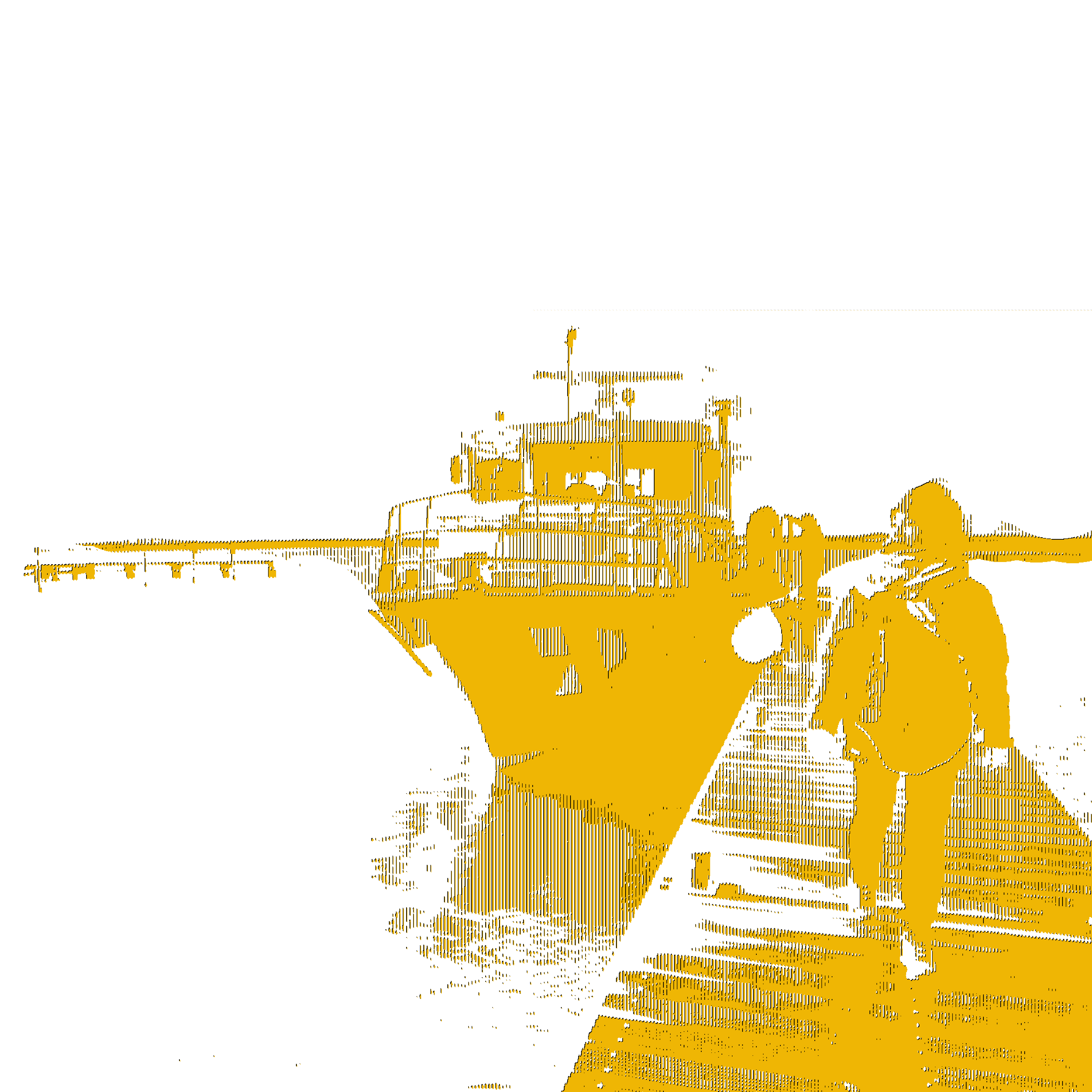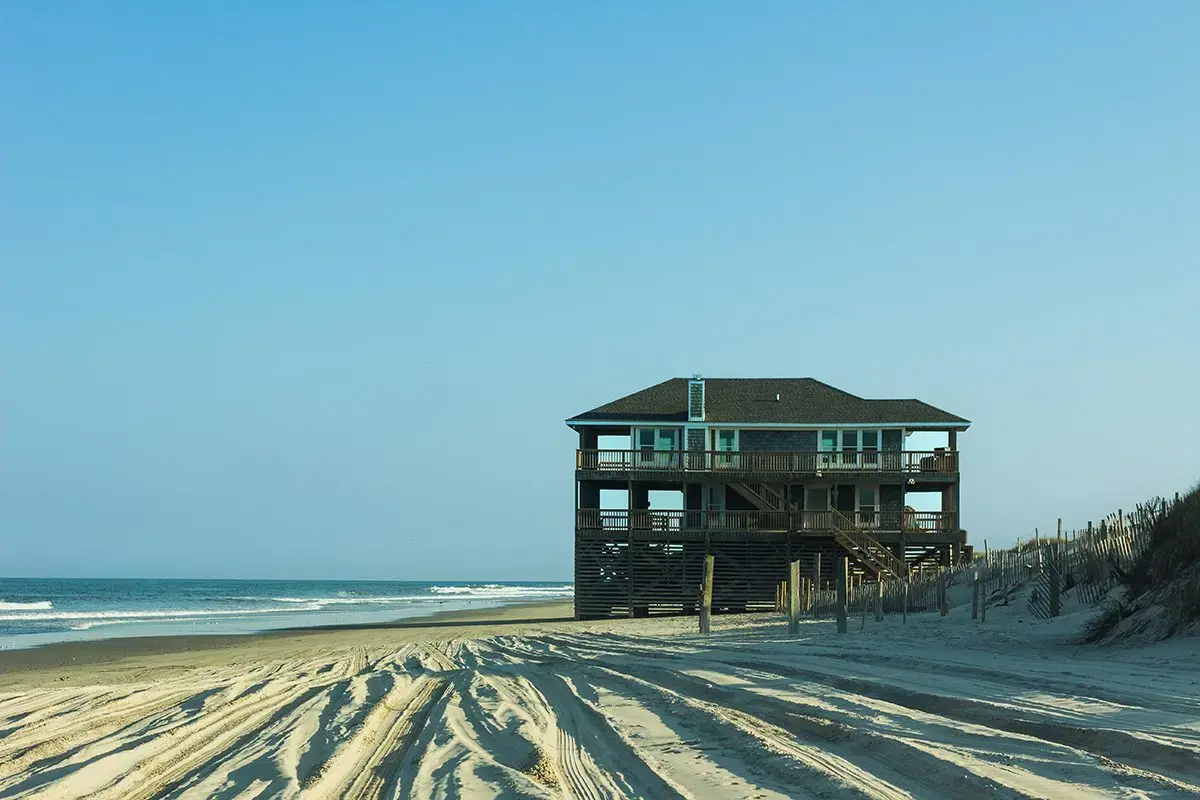
On a blustery day in September, Edward Ponton studies an incoming storm as the afternoon rain meets the ocean. He points north, calling attention to the backs of the rolling waves, indicating a southeast swell. It’s the remnants of Hurricane Fiona making its way up the North Carolina coast.
“There’s something down there,” Ponton warns. “If it’s coming across a certain way, you have to be prepared … and that would have been 100 years ago, how people knew there was a storm coming.”

As a nonprofit journalism organization, we depend on your support to fund our nationwide Connected Coastlines climate reporting. Donate any amount today to become a Pulitzer Center Champion and receive exclusive benefits!
Ponton’s family has been a multi-generational presence in the Northern Currituck Outer Banks since the early 1960s, when Buddy Ponton, his father, came south from Virginia Beach to fish and build a family home.
From the North Carolina-Virginia line to the start of the paved road in Corolla, North Carolina, there are three unincorporated communities: Carova Beach, North Swan Beach and Swan Beach. This 11-mile stretch — often referred to as “Carova” or “the 4×4” — is the northernmost part of the Outer Banks, sandwiched between the Atlantic Ocean to the east and the Currituck Sound to the west. The only way to access this area is by driving up N.C. Highway 12 in a four-wheel-drive vehicle until the two-lane highway becomes a beach.
Ponton’s memories span a lifetime of experience. He is the youngest “old-timer”: a resident who was born and raised in the area and who still lives there full time. In the lowlands where he rowed his canoe as a child, new houses now sprout up like weeds. A 500-year-old herd of protected wild horses grazes over 7,544 acres of land that their human neighbors are racing to buy up even as stronger storms and bigger floods threaten to cut the remote community off completely.
But the changing climate has not scared off longtime residents nor big developers seeking to capitalize on the booming tourism and second home market. In fact, with each passing year, it becomes more and more expensive to buy a home and live in Carova, especially in the face of increasing climate threats.
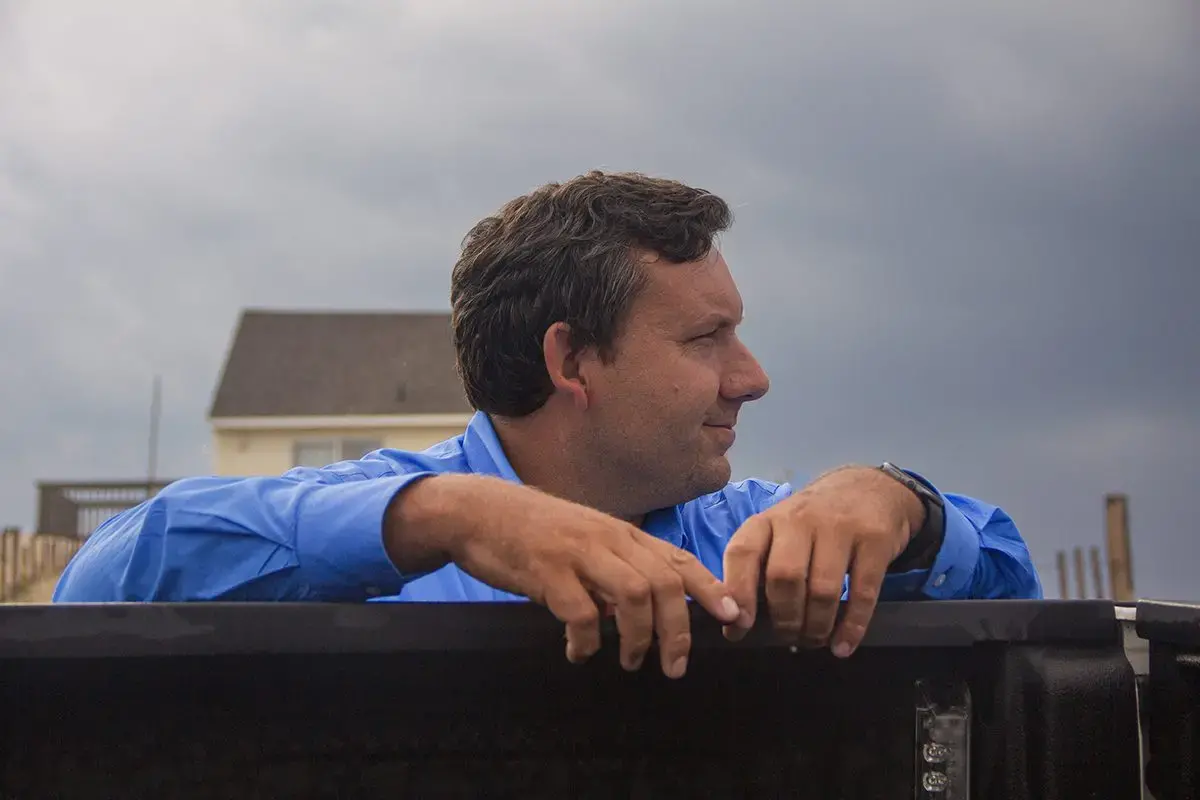
Understanding Carova
In the 4×4 area, there are no grocery stores, gas stations, or commercial businesses of any kind. There are no hospitals or healthcare providers, though the community does run a volunteer fire and rescue service. A tightknit community has formed from years spent out on their own.
In the 1960s, a Virginia Beach-based developer purchased land and subdivided it into one-third-acre lots. “Originally, the plans had been for the Ocean Highway to come down from Sandbridge (Virginia) down to Corolla. A lot of people don’t realize development here on the Currituck Banks started from the north,” Ponton said.
Now, a southern beach gate restricts the wild horses from moving into Corolla, and two northern gates restrict vehicle access into Virginia via False Cape State Park in Virginia. Those gates closed in the 1970s to vehicle traffic, angering residents who now must drive south to the Wright Memorial Bridge and head back north on the mainland to get to Virginia. Less than 20 old-timers still have keys to the northern gate — Ponton’s key will die with his father, Buddy.

Edna Baden was a weekend warrior before she moved full time to the Northern Outer Banks 28 years ago. There were only about 50 year-round residents then, which has grown to about 200 today. “When I moved here in 1994, there were only a handful of houses on the ocean. There were a lot of trailers still. They had little shack kind of places,” Baden said, referring to the Outer Banks’ classic stilted, trailer-style home.
Those original homes are now few and far between, nestled in thick maritime forest. Many of the old-timers settled on the Currituck Sound side, along man-made canals that give them boat access.
Today, there are more than 3,000 properties and 700 houses on this strip of barrier island. Many of those houses appear gargantuan against the dunes, with some of the oceanfront homes featuring more than 20 bedrooms and bathrooms.
It is surprising to see the size of these homes considering that the entirety of the northern Currituck Outer Banks is maintained under the Coastal Barrier Resources System, or CBRS, which was created by the Coastal Barrier Resources Act, signed into law by President Reagan in 1982.
The purpose of the law is to encourage land conservation and discourage development in storm-prone coastal areas by withdrawing federal funding from Coastal Barrier Resources Act areas, also known as CBRA zones. People who build within a CBRA zone cannot access the National Flood Insurance Program protection or federal disaster assistance money.
In most cases, researchers have found that the act disincentivizes development in those areas. But in Carova’s case, it is a desirable enough destination that construction creeps in anyways, bringing in high-end development and people willing to pay exorbitantly high insurance rates.
High Seas Ahead
At milepost 16, a house called the Laughing Gull sticks out like a sore thumb, sitting so far out on the beach that cars have to weave around it to get by. It seems like it’s closer to washing away with each crashing wave.
Researchers say that in the United States, the East and Gulf coasts will bear the worst of sea level rise. Like watching your pillow spring back after you lift your head up, a melted glacier at the poles gets pushed up by water underneath it, sending the new ice melt far away — to places like the North Carolina coastline. Over the next three decades, sea levels are expected to rise 10 to 14 inches along the East Coast and 14 to 18 inches along the Gulf Coast, the highest levels in the United States.
Scientists can estimate this rise through 2050 because the oceans trap and store heat, so high greenhouse gas emissions now do not instantly translate to higher sea levels. Instead, the sea level rise over the next 30 years is based on the warming in our world today, and there is “virtually nothing that we can do about that,” said Daniel Gilford, climate scientist at Climate Central, a nonprofit organization that researches and reports the science and impacts of climate change.
This is happening while the Outer Banks are no longer naturally moving. Over time, the islands are supposed to gradually shift westward as ocean waves and winds from the east blow sand to build up the marshes on the west. But hard structures like buildings and roads stop that steady erosion and rebuilding from happening, and instead, there is erosion without addition, whittling the island away until someday, it might not be there at all.
On the northern Outer Banks, sea level rise will first hit areas along the Currituck Sound, the side that naturally should be rebuilding, since the marsh is closer to sea level. This inevitable rise is likely to swallow swampier areas near the Virginia border, around the man-made canals, and the entire Currituck National Wildlife Refuge.
Without extreme cuts to greenhouse gas emissions, sea levels could rise more than a foot by 2050. Beyond that, global action on climate change could mean the difference between 2, 4, or more feet of sea level rise by 2100.
“In the latter days of the 21st century, the sea level rise along the North Carolina coast is really going to be dramatically influenced by the decisions that we make right now,” Gilford said.
Today, the Laughing Gull stands alone — its neighbors were moved landward to behind the dunes as the tide encroached upon their foundations. But its survival is uncertain because rising seas are not the only climate concern in Carova. Hurricane Florence, a ferocious storm that hit in 2018 and was a $24 billion disaster, didn’t hit Carova as badly as other places along the Outer Banks. But the threat of hurricanes remains, and a warmer ocean can make hurricanes worse by fueling greater flooding and storm surges.
Hurricane response is complicated because of Carova’s designation in the Coastal Barrier Resources System, which bars federal flood insurance coverage, forcing property owners to turn to private insurance markets.
“The insurance on our house gets dropped every two or three years,” said Elizabeth White, a Swan Beach resident since 2004. She is a customer at Lloyd’s of London, which she says is some of the most expensive insurance on the market.
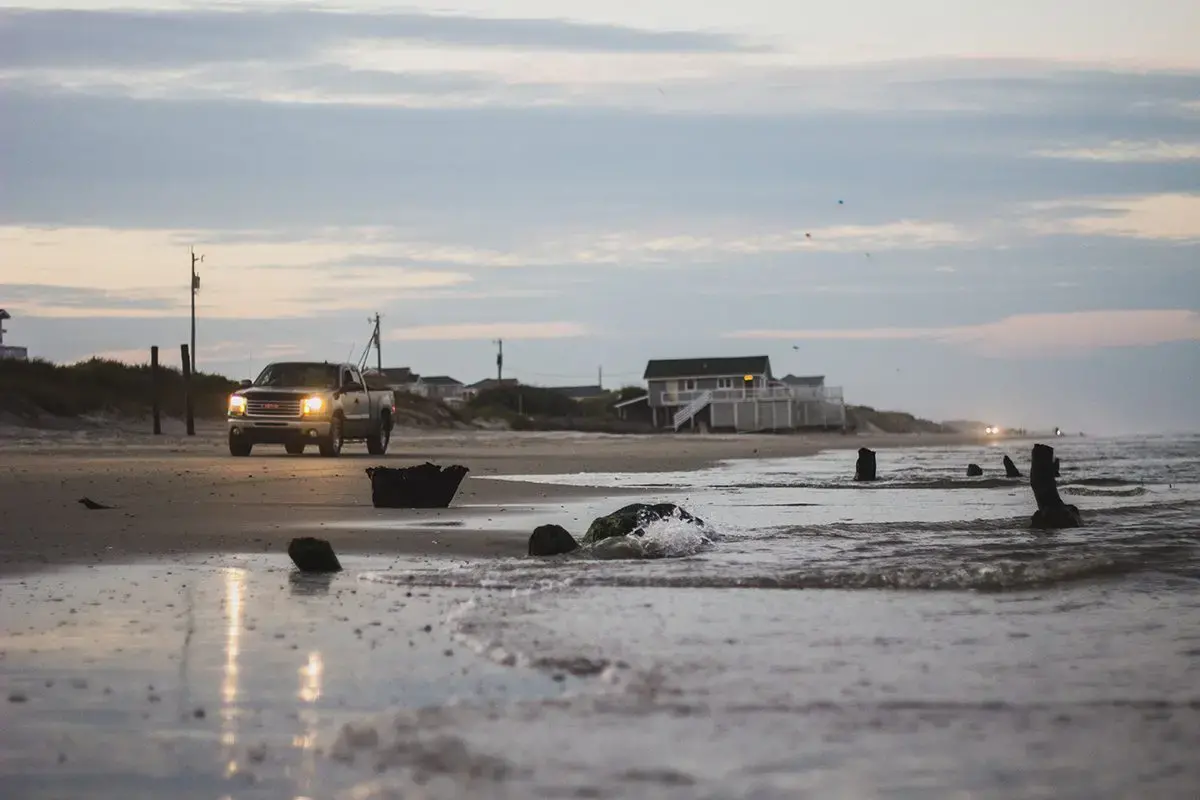
Paying the price
Living in Carova is no easy feat in itself. Since the area is zoned exclusively for low-density residential housing, increasingly large and expensive single-family homes are the only option for buyers. While the trend had been moving in this direction for a couple of decades, the start of the COVID-19 pandemic only accelerated it.
“Sales went through the roof,” J-P Peron, a real estate agent and resident, said of the pandemic. “Overnight, my business quadrupled.” So many people were buying houses that Carova ran out of post office boxes and internet plans. People snatched up houses and land, making it even harder for the people who build, clean and service houses in Carova to live there, also.
Two of those builders are Steve Grout, a carpenter who has been a full-time Carova resident for more than a decade, and Alex, an immigrant day laborer. In September, they were working on renovating an oceanfront house that was weathered away by the wind and sea. But the new siding they were installing won’t last long, either, Grout said, as it’s hard to withstand the elements.
While Grout has a short commute to work each day, Alex lives on the Currituck County mainland and makes the two-and-a-half-hour round trip commute to Carova and back every day. “My family lives in Durham,” Alex explained, saying that he visits them every weekend, “but the rest of the time I stay out here in Powells Point.”
Powells Point is right across the Wright Memorial Bridge on the mainland, but even then, it can still take over an hour to reach Carova. Alex wishes that Carova had rentable accommodations so that he and his family, along with other workers, could live closer to the construction sites.
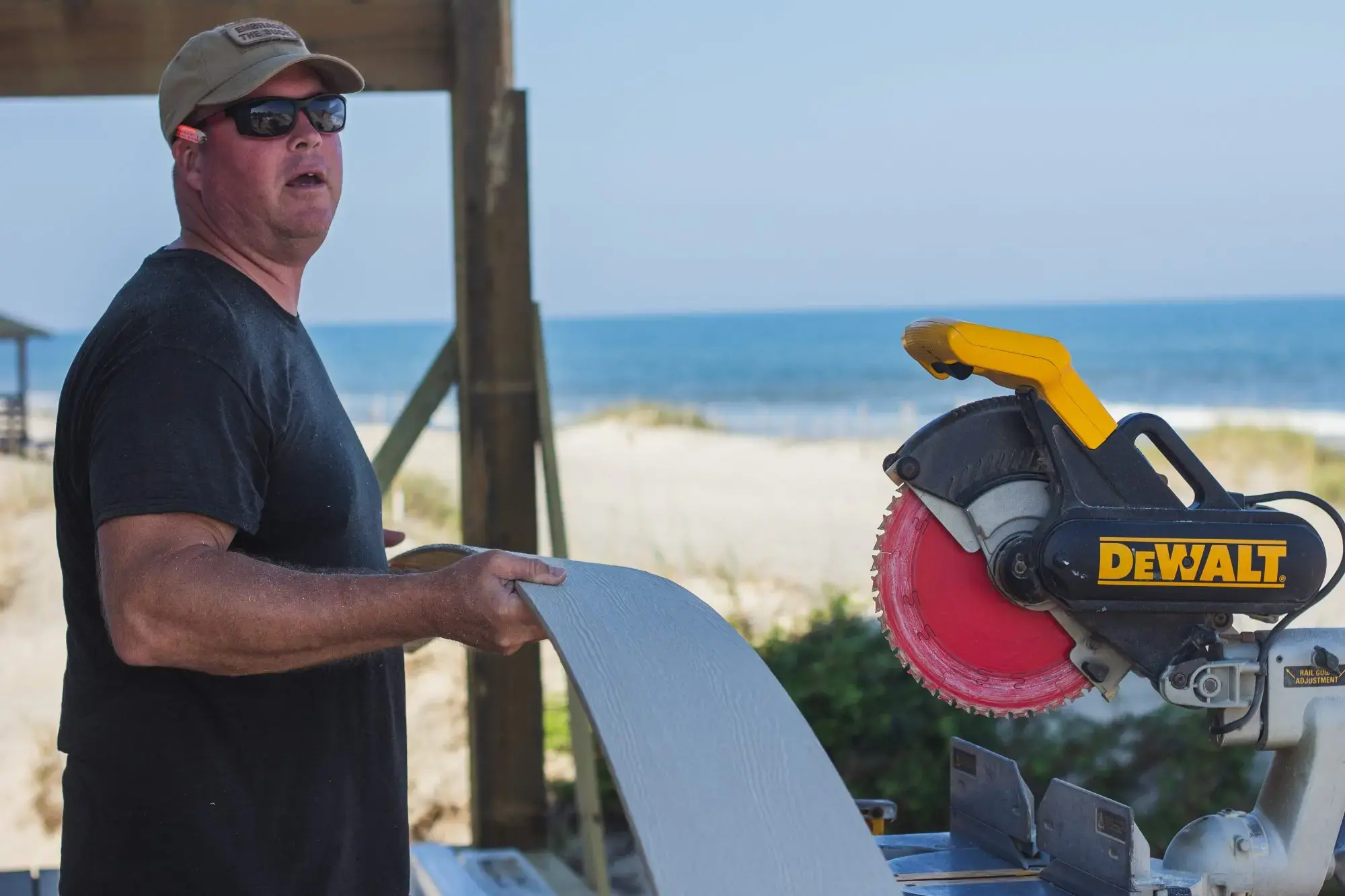
Because of the lack of affordable rental homes in Carova, and despite 80% of properties in the offroad area sitting empty, sourcing labor can be difficult and projects take longer to complete. Builders rely on workers like Alex, who are both skilled and dedicated, and Grout said they usually have to pay them more than a contractor would for similar work elsewhere.
At the construction site, Grout and Alex were preparing for the arrival of a crew from HGTV to film the house for an episode of the show “Beachfront Bargain Hunt.” Grout said their renovation faces unique limitations, compared to other homes that appear on the show.
“It’s hard for us because we can’t really find help out here. Normally, they probably have 30 guys out here and finish the whole project in a month,” Grout said. “But we don’t have that luxury.”
Clark Twiddy, president of Twiddy & Co., a property management company on the Outer Banks, sees that his employees who clean and service the rental homes face similar challenges. “The average cleaner for Twiddy & Co. drives 82 miles one-way,” he said. “The people who clean these homes by and large don’t live here.”
But without changing the area’s zoning to allow for multifamily housing or without a clear plan from the county or Twiddy & Co. about who is going to supply that housing, it is hard to see how people without considerable resources can afford the cost of living. “We as a destination will fail, period, unless we address housing in a meaningful way,” Twiddy said.
For those who are able to buy a house, they then need to be able to afford a car with four-wheel-drive, which quickly deteriorates from the sand and saltwater. “The life expectancy of a daily driver up here is between three and five years at most,” Peron said. “I’m on my sixth Ford Expedition for work. Then I’ve also gone through one Jeep Cherokee, two Jeep Grand Cherokees and one Jeep Commander.”
The expense of living in Carova is a factor of its remoteness, lack of federal infrastructure and exposure to the elements. In the face of imminent climate threats like storms and floods that “we live with all the time,” as Ponton described.
From an outside perspective, it can be hard to understand why people are willing to spend so much to live in a place as remote as Carova. Even when speaking with residents about their experiences, questions linger about why they choose to live there and whether they can do it sustainably.
Next in the series: Read about the steps that residents are taking to manage the environment around them, whether that is to protect the wild horses, the natural landscape, or their way of life.



